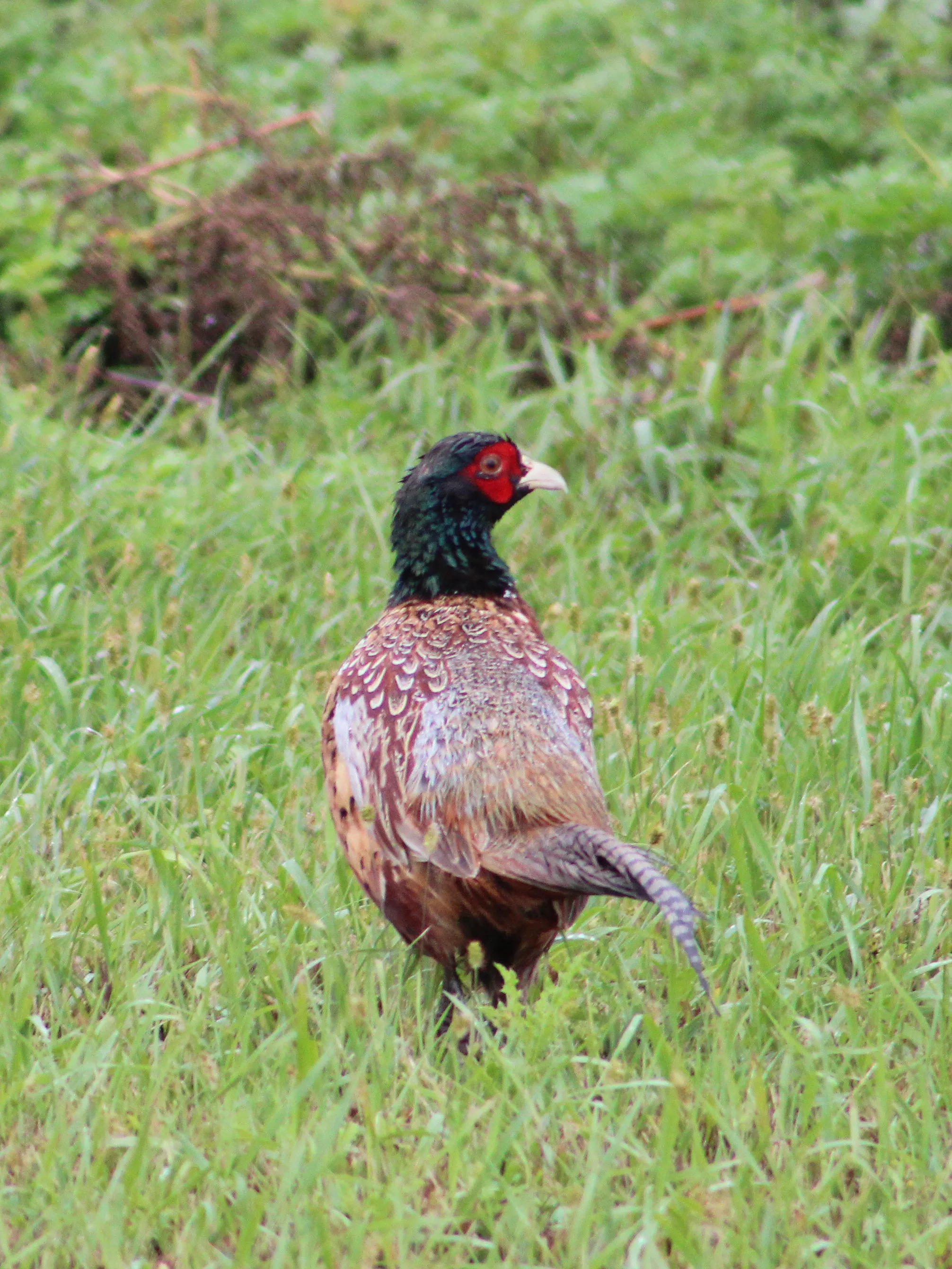
This Soaks. With pheasant openers approaching, wet conditions may change where birds are located. Adjust to their preferences to find better success when the season gets going and when hunting spaces get a bit swampy. Simonson Photo.
By Nick Simonson
In my early morning walk with the dogs, the lone frog croaking out in the last empty lot on the north end of the neighborhood and the cool, heavy, foggy air hinted at a season out of place. It seemed more like spring than the cusp of October, but in just a couple weeks, pheasant season will open instead of that first run of walleyes being the highlight on the calendar. The recent autumn rains that have soaked the area have left ditches full like they were five months ago, as if restored by the vernal meltwater following our snowy winter and the rains have added a challenging element to the upcoming hunt. As sloughs get recharged from summer dryness and low areas are inundated with a bit of swampiness, here are some things to keep in mind for a pheasant opener that may be a little wet in areas if this trend continues, or another late fall soaker changes the landscape later in the season.
Shifting Edges
Pheasants like to stay dry, and they love edges at any time of year. When sloughs fill up and their centers become full of water and that water pushes out toward the edge of the thicker vegetation, pheasants will change their locations with the shifting water level. In the mornings, look for birds to be in the drier areas of slough cover, utilizing cattails on the edge of those spaces where grass cover and especially small rises are adjacent to the reeds. There pheasants can easily move up into the grass or more open hillsides with sparser cover to get dry from the dampness of overnight. If there’s a slough next to a gravel road, all the better to mark that on your mental map, as the birds will utilize that man-made edge as well to get high and dry in the early goings and get a little grit for the day as well.
Hidden Humps
Much like the edge of a slough isn’t static, there are areas within thicker cover that allow pheasants to get above the water even out in the middle of a large cattail flat. Be it small humps of dirt, piles of old reeds, or perhaps a thicket of brush growing in those wetlands, these locations are often interspersed in what looks to be a homogeneous stretch of swampy vegetation. Let dogs work a bit deeper into the wetlands to locate those spaces that – even though they are wet – will still harbor pheasants. Additionally, if your favorite upland areas have a swampy base to them, after a soaking, consider switching footwear so you can sneak in along flooded deer trails or into those more open spaces where pheasants can get out of the water, but still remain comfortably concealed. Changing from an upland boot to a waterproof boot more often reserved for later in the season, or even deer hunting or ice fishing, can help get you access to better pheasant hunting when things get wet.
Other Cover
If a slough is filled to its brim, and maybe even overflowing into a ditch, there’s likely less cover for pheasants to use and those walks in the dank of the deep areas may be less enjoyable, and ultimately less successful. Look around your favorite hunting area for other cover that keeps pheasants secure. It may be a cluster of brush along the hillside leading down to the swamp. It could be a row of pine trees on the windward edge of the property. Or it may simply be a tall stand of cane running up the drain down to the lower portion of the land. These spaces are not only generally drier than a slough, but also provide good cover to keep pheasants protected from the elements and predators. When things get too damp in low spaces, go high and hit those points of interest that pheasants utilize in wet weather.
While predicting the weather a couple weeks ahead of pheasant opener isn’t easy, changing your plans based on the conditions is. Knowing how to adjust to a wetter landscape or shifting tactics if your long-scheduled weekend is a rainy one will help you find where pheasants are holed up and ultimately provide a more successful hunt, no matter what the conditions…in our outdoors.
